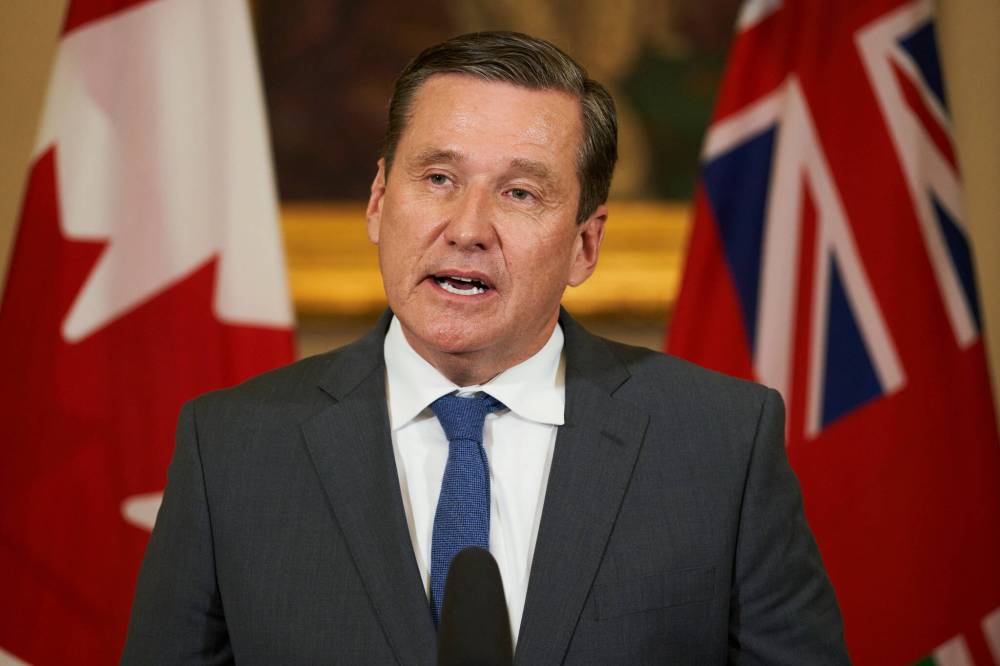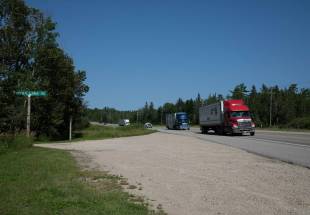Twinning Trans-Canada should be No. 1 priority
Read this article for free:
or
Already have an account? Log in here »
To continue reading, please subscribe:
Monthly Digital Subscription
$0 for the first 4 weeks*
- Enjoy unlimited reading on winnipegfreepress.com
- Read the E-Edition, our digital replica newspaper
- Access News Break, our award-winning app
- Play interactive puzzles
*No charge for 4 weeks then price increases to the regular rate of $19.00 plus GST every four weeks. Offer available to new and qualified returning subscribers only. Cancel any time.
Monthly Digital Subscription
$4.75/week*
- Enjoy unlimited reading on winnipegfreepress.com
- Read the E-Edition, our digital replica newspaper
- Access News Break, our award-winning app
- Play interactive puzzles
*Billed as $19 plus GST every four weeks. Cancel any time.
To continue reading, please subscribe:
Add Free Press access to your Brandon Sun subscription for only an additional
$1 for the first 4 weeks*
*Your next subscription payment will increase by $1.00 and you will be charged $16.99 plus GST for four weeks. After four weeks, your payment will increase to $23.99 plus GST every four weeks.
Read unlimited articles for free today:
or
Already have an account? Log in here »
Hey there, time traveller!
This article was published 19/08/2022 (1208 days ago), so information in it may no longer be current.
For truckers and Manitobans who have seasonal cabins and homes in northwestern Ontario’s cottage country, the busy undivided stretch of Trans-Canada Highway just before the Manitoba/Ontario boundary has always been a white-knuckler, especially during the summer and on weekends.
Related coverage
Family demands improved safety after losing father, son in Trans-Canada horror
Calls grow for safety improvements on stretch of Trans-Canada Highway
Manitoba under pressure to upgrade 17-kilometre Trans-Canada stretch
As a grieving family demands action on Trans-Canada, province vows to ‘look into’ adding lanes
Penny-pinching Tories have money to make deadly stretch of highway safer
For a Dryden, Ont. family, it proved deadly. Mark Lugli, 54, and his 17-year-old son, Jacob, were killed in a head-on collision near Barren Lake in July 2019, a tragedy that renewed calls for safety improvements on that stretch of road – including finally twinning the last remaining undivided section of Trans-Canada Highway in Manitoba.
The province is only now in the “early stages” of exploring how to divide the 17-kilometre stretch between Falcon Lake and the Ontario border. Transportation and Infrastructure Minister Doyle Piwniuk said twinning that section has challenges owing to the topography of the area. “There’s a lot of work there … when it comes to rocks. There is a lot of topography we have to deal with,” he said. “It’s going to be a substantial investment to twin that portion of the highway.”
“It’s rocky, costly, we’ll look into it” seems a flimsy response, considering just kilometres away in Ontario, also located in the Canadian Shield, a larger twinning project is already underway on the approximately 40-kilometre stretch of the Trans-Canada — known there as Highway 17 — between the provincial boundary and the Kenora bypass.
The first part of a three phase plan – which is also “a lot of work,” including rock-blasting and clearing thick brush — is due to be completed by 2024. It, too, is a “substantial investment”; so far, the first phase of the project has cost Ontario $31 million.
But then, a national corridor has always been a substantial investment. The Trans-Canada Highway, known as Highway 1 in western Canada, is among the most ambitious infrastructure projects Canada has ever undertaken, spanning 7,821 kilometres and stretching from Victoria, B.C. to St. John’s, Nfld.
The 1950 Trans-Canada Highway Act is a key example of what can happen when there is co-operation between federal and provincial levels of government; the initial highway, which officially opened in 1962, was built on a cost-shared basis.
That kind of commitment seems unfathomable in today’s political climate.
As one would expect on a 60-year-old highway, provinces have made many investments over the past six decades, improving stretches with twinning projects and adding routes to improve interconnectivity, such as the creation of the Yellowhead Highway through the northern Prairies and the Confederation Bridge linking Prince Edward Island with the mainland.
DAVID LIPNOWSKI / CANADIAN PRESS FILES Minister of Transportation and Infrastructure Doyle Piwniuk
There’s no question twinning this dangerous section will be an undertaking for the reasons Mr. Piwniuk outlined, but it is necessary. And it’s not something to be “looked at in the future.” The urgency is there for those who use the highway; what’s required now is some political will.
As the Free Press has pointed out, there’s money available for this project. Since 2017, Manitoba’s Progressive Conservative government has been leaving infrastructure money on the table; a reallocation of funds toward a twinning project – one that might prevent tragic collisions such as the one that claimed a father and son – seems like a prudent choice.
In the meantime, there are safety mechanisms the province could implement right now, such as better signage alerting motorists to turn-offs onto lake-access roads, and lowering the speed limit from 100 km/h on that undivided stretch. It’s worth noting the speed limit in Ontario is 90 km/h.
It’s time for the Trans-Canada Highway to be No. 1 on Manitoba’s infrastructure priority list.










